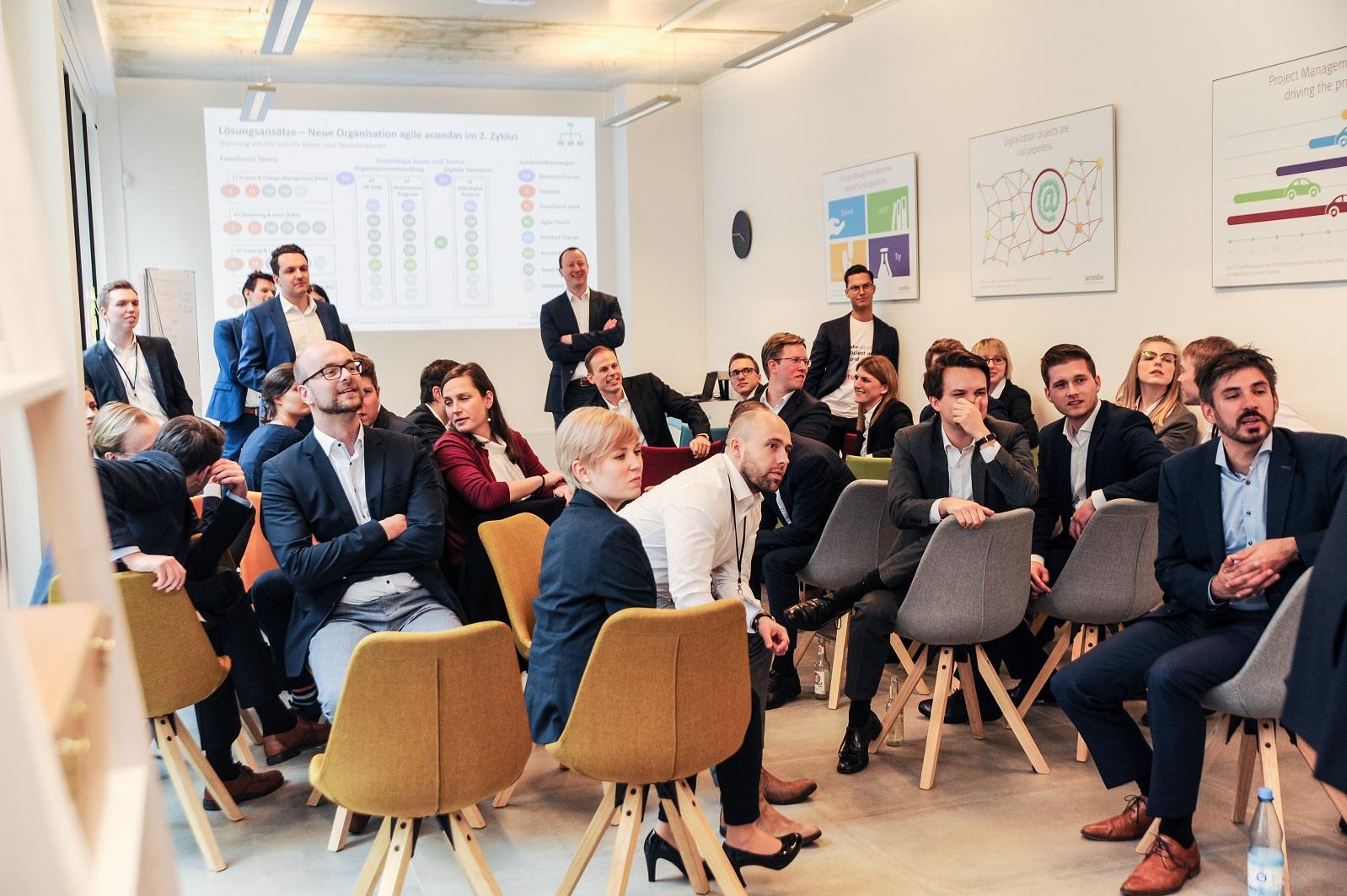Focus on the customer: Developing new knowledge together
acondas on the move (4): New products, new services, new ways of interaction – The rapidly changing requirements of customers force companies to constantly adapt their business models. In order to support them as well as possible, acondas has adopted an agile set-up. The goal: to create new knowledge quickly together with customers.
Since last autumn, acondas has been operating in a new, agile set-up with a changed distribution of roles. As pressure on companies to respond to changing needs has increased, we saw the value of adapting our form of consulting as well. The goal of the realignment is to develop new expertise quickly in close exchange with customers, developing new knowledge about current problems and applying it immediately in ongoing projects.
This focused customer orientation has proven effective. Management approaches such as Open Innovation and Co-Creation have broadened the creative basis for the development of new methods and techniques. A key advantage of involving customers is that the knowledge developed is closely interlinked with business practices. Early testing of intermediate results ensures that solutions are only fully developed if they meet the customer’s requirements precisely. Newly generated knowledge is transferred into various learning and training formats and thus made available to interested customers and acondas employees.
In practice, knowledge development takes place in a process which is structured along five-week sprints over a period of six months. In each sprint, independent intermediate results (so-called “increments”) that can be used by customers, are worked out. In the first step, the customer’s wishes and needs are collected in a requirements profile called “product backlog”. Important: The requirements are formulated from the customer’s point of view; the customer expresses the questions the new knowledge should answer. In the second step (“refinement“) these requirements are specified and prioritized.
In regular meetings and based on customer feedback, we ensure that the increments correspond to the catalog of requirements. In the opening “spring planning” meeting, the consulting team plans the work for the upcoming sprint. The most important content from the product backlog is transferred to the “sprint backlog”, and the goals of the sprint is also defined.
During the next five weeks, the team develops the knowledge. The work of the team members is coordinated, and the status is checked in weekly status meetings. At the end of each sprint, the degree of target fulfillment of the increments is assessed in a “sprint review”. Team members are encouraged to provide feedback on the results. Current developments e.g. in the customer’s market environment are also considered.
Finally, the participants conduct a “sprint retrospective” to reflect on their teamwork and derive improvements for future sprints. When these four steps have been completed and when the customers’ (and other stakeholders’) requirements have been entirely met, the end product will be accepted by the customer.
What is the next leg of the journey? To be continued: “A cultural change”, tba soon …
